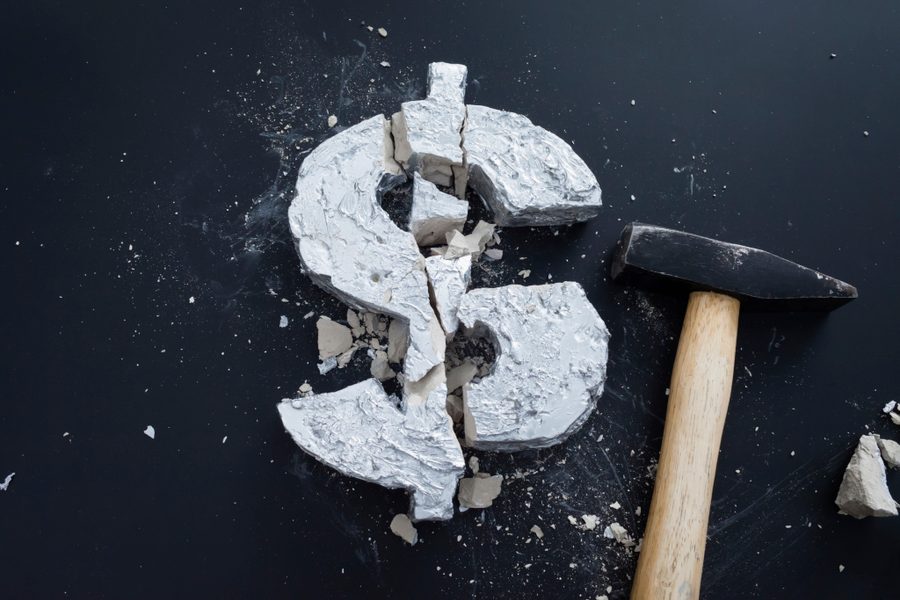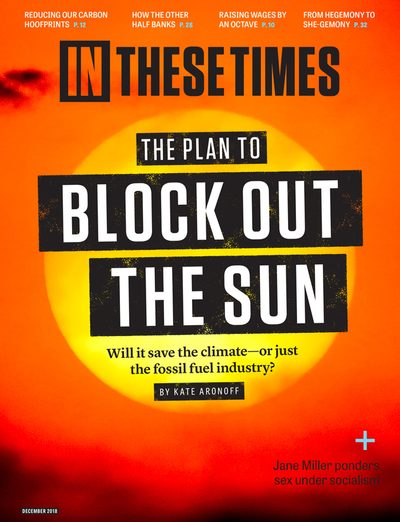15 Years Ago, We Predicted the Financial Crash. We Think Another Is On Its Way.
In These Times called for real bank regulation back in 2003—it still hasn’t happened.
In These Times Editors

Throughout our 42-year history, In These Times has often played the role of Cassandra. Perhaps the most unhappy instance is our prediction of the burst of the housing bubble, and the devastating foreclosure crisis that followed. In his 2003 article, “Bursting Bubbles,” economist Dean Baker warned that the popular progressive explanation for the 2001 recession was wrong. Bill Clinton may have boasted in 2000 of “the best economy in 30 years,” but George W. Bush’s disastrous tax cuts and military profligacy only partly explained the subsequent slump.
The Clinton-era economic boom, Baker wrote, “was built on three unsustainable bubbles”: the stock bubble, which had already burst, and the dollar and housing bubbles, which were sure to. It was these bubbles, Baker argued, “that created the basis for the 2001 recession and the economy’s continuing period of stagnation.” Baker predicted that the housing bubble had reached its peak, with troubling consequences. The rise in home prices was outpacing inflation, and families were counting on that rise in home values to offset high unemployment and stagnant wages. The result was skyrocketing mortgage debt:
This situation is frightening for two reasons. First, as a short-run matter, if housing prices fall sharply in some of the areas where the effects of the bubble are largest (for example the Boston, New York, Washington, and San Francisco areas), new home buyers (and those who recently refinanced their mortgages and took money out) could find they have negative equity in their homes.
If someone borrows $270,000 to buy a $300,000 home, and the price falls by one-third, this leaves them owing $70,000 more than the home is worth. When this happens, there is a huge incentive to just let the mortgage holder foreclose on the home. If this were to happen on a large scale, the survival of many banks and financial institutions would be at risk.
That’s just about exactly what came to pass: Five years later, amid skyrocketing foreclosures, some of our largest banks and financial institutions collapsed.
In December 2008, as an accountability-free bailout was underway, David Moberg called for an economy “beyond casino capitalism.” That would entail financial reforms including the banning of many types of derivatives and the creation of a financial products public safety committee, stricter capital reserve requirements on banks, and a global financial transaction tax. But “fixing the casino economy involves more than better control over capital markets,” Moberg wrote. “There’s also a need to rebalance the real economy.” That included immediate relief for underwater homeowners, as well as a robust federal investment plan:
A massive stimulus plan is also needed. But to create new jobs, it should downplay tax breaks and instead invest in infrastructure repair and new construction, support hard-pressed state and local governments, provide more money for education aid and basic research, and lead an energy efficiency campaign, with public and private employers retrofitting homes and public buildings.
Ten years later, as you probably know, we haven’t gotten around to doing most of these things on any meaningful scale. An $800 billion stimulus package under Barack Obama did create an estimated 3.3 million jobs, but it was too small to spur a sustained recovery and was quickly followed by a downward spiral in public investment. Those reforms that we did implement — imposing stricter capital requirements, for example — are being rapidly undone by the Donald Trump administration.
So, we find ourselves playing Cassandra once again and warning, like many others, that we’re heading straight into more of the same. On the occasion of the 10-year anniversary of the financial crisis, InTheseTimes.com published an ominous forecast from The Democracy Collaborative’s Thomas Hanna:
There will be another financial crisis. That much is certain. Only when and how destructive it will be is up for serious debate. The financial industry is more consolidated than it was in 2007 — dominated by banks still too big to fail. Bank lobbyists and their congressional allies have systematically undermined the weak regulatory reforms put in place after the crisis, demonstrating again that the tremendous political and economic power these financial institutions wield makes strong regulatory and institutional reforms (such as “breaking up the banks”) improbable, if not impossible.
But if the past 10 years have seen pitifully little action from those responsible for regulating the banks, we’ve also seen a groundswell of popular action to name and shame those responsible for crashing the economy — from the Occupy movement’s refrain of “banks got bailed out, we got sold out,” to Bernie Sanders’ insurgent campaign and call to break up the banks, to the reemergence of socialism as a serious force in American politics. It’s in this context that Hanna proposes a radical solution: public ownership of banks.
When the next crisis hits, the public will once again be called upon to step in and bail out Wall Street. We need to start seriously preparing an alternative response. …
Opinion polls have repeatedly shown that a solid majority of America ns across the political spectrum detest bank bailouts and that, in fact, they would rather support some form of public ownership.
We won’t try to predict what happens next. But, as Hanna put it, “The future of banking is far too important to be left to the bankers.”








